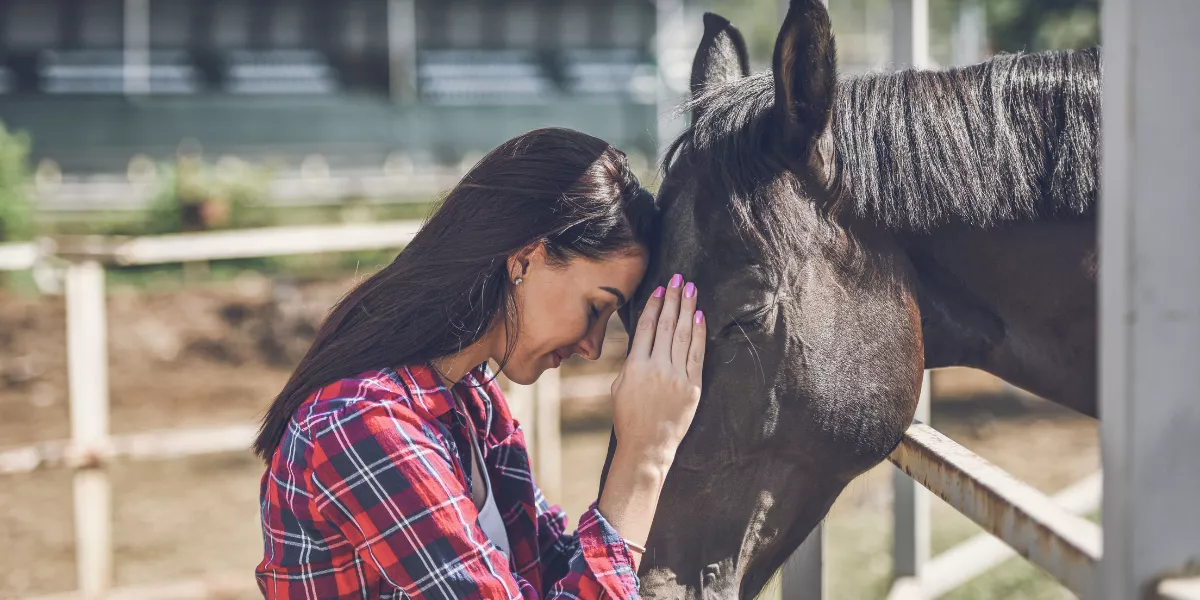
To build trust and strengthen your bond with your horse, spend quality time together engaging in activities like trail rides and groundwork exercises. Pay attention to body language signals such as relaxed postures for contentment and ear pinning for discomfort. Communicate clearly using consistent verbal cues and rein aids, and reinforce positive behaviors with treats or praise. By following these key methods, you can deepen your connection with your equine companion and foster a meaningful relationship.
Spending Quality Time Together
To strengthen your bond with your horse, dedicate uninterrupted time for engaging in activities that both of you enjoy. Spending quality time together is essential for building trust and deepening your connection with your horse. Consider going on leisurely trail rides, practicing groundwork exercises, or simply grooming and petting your horse. These activities not only provide physical exercise but also offer opportunities for communication and mutual understanding.
During your time together, focus on being present and attentive to your horse's needs and reactions. Pay attention to how your horse responds to different stimuli and adjust your interactions accordingly. By being attuned to your horse's cues and signals, you can create a harmonious and trusting relationship.
Additionally, try to vary your activities to keep things interesting and engaging for both you and your horse. Introducing new challenges and experiences can strengthen your bond as you navigate them together. Remember, the key is to enjoy each other's company and create positive memories that will nurture your relationship over time.
Understanding Body Language Signals
When spending quality time with your horse, pay close attention to their body language signals as they communicate their needs and emotions nonverbally.
Horses use a variety of physical cues to express themselves, so understanding these signals is crucial for building trust and a strong bond. For example, a relaxed posture with ears forward indicates a content and attentive horse, while pinned back ears may signal discomfort or aggression.
Additionally, watch for subtle signs like tail swishing, stomping, or tense muscles, which can convey anxiety or agitation. By observing your horse's body language during different activities such as grooming, riding, or feeding, you can better respond to their needs and strengthen your connection.
Consistent and Clear Communication
Establishing consistent and clear communication with your horse is essential for building a strong and trusting relationship. Your horse looks to you for guidance and relies on your cues to understand what you're asking of them. To communicate effectively, use consistent verbal cues, body language, and rein aids. Be mindful of your tone of voice and body posture, as horses are highly perceptive to these signals.
When riding, remember to apply your aids with clarity and precision. Use your legs, seat, and hands in a coordinated manner to convey your intentions clearly to your horse. Consistency is key; ensure that your aids are applied in the same way each time to avoid confusion.
Additionally, spend time on the ground practicing communication techniques. Work on voice commands, body positioning, and establishing boundaries to reinforce your leadership role. By being clear and consistent in your communication, you'll strengthen the bond with your horse and build a foundation of trust that will benefit your partnership in the long run.
Building Trust Through Positive Reinforcement
As you interact with your horse, remember that building trust through positive reinforcement involves rewarding desired behaviors to reinforce a strong connection and understanding between you both. Positive reinforcement is a powerful tool in strengthening your bond with your horse. By rewarding your horse immediately after they exhibit a positive behavior, such as responding to a cue or showing calmness, you're reinforcing that behavior and encouraging its repetition. This method helps your horse associate good behavior with pleasant outcomes, making them more likely to repeat these behaviors in the future.
Using treats, verbal praise, or physical affection as rewards can be highly effective in building trust. It's crucial to be consistent in your reinforcement to avoid confusion and ensure clarity in communication. Through positive reinforcement, you can create a positive and encouraging environment for your horse, fostering a sense of trust and cooperation. Remember, patience and consistency are key when using positive reinforcement to build trust with your horse.
Conclusion
So, by spending quality time, understanding body language, communicating clearly, and using positive reinforcement, you can build a strong bond and trust with your horse.
Remember, consistency is key in developing a relationship based on trust and mutual respect.
Keep practicing these methods and you'll see your bond with your horse grow stronger every day.
Trust takes time to build, but with patience and dedication, you can create a lasting connection with your equine friend.




